You see in the photo above a very beautiful, carved structure, but someone can make all the details on their own, while for someone it is much easier and more reliable to use the elements made at the factory. Therefore, after all the calculations, you need to purchase accessories for wooden stairs according to the required quantity.
Now we will talk in more detail about such ready-made parts and watch a video in this article on this topic.
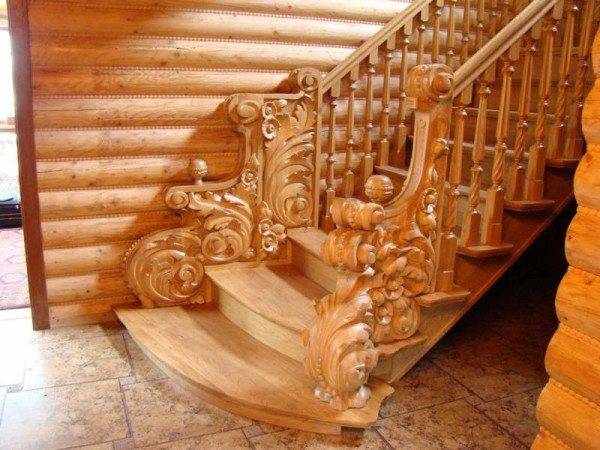
Calculation and assembly of wooden stairs

In general terms, to assemble a wooden staircase with your own hands, you will need details such as a stringer or bowstring, steps (riser and tread), as well as railings (balusters and handrails). If we are talking about U-shaped or L-shaped staircase structures, then a staircase will also be added to the general set, if rotary steps are not mounted instead. But this is the general picture, but in fact there are much more such details, because there is still the so-called fittings.
Calculation of materials for assembly
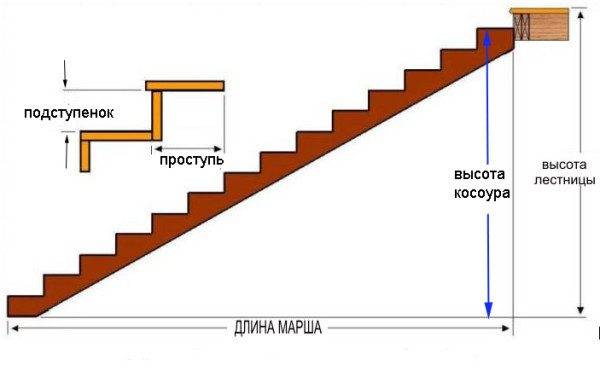
- In order to make or order (purchase) components for a wooden staircase, we need to accurately calculate its dimensions... In this case, we can calculate the number of parts and their dimensions (length, thickness, width and height). Calculations need to start with the size of the room, where the most important parameter will be its height, as well as the distance of the stairs from the floor of the first floor to the floor of the second floor.
- Suppose we need to calculate the materials for one march of a simple staircase in a room with a height of 2.6 m and a ceiling of 0.25 m, then 14 steps of 0.19 m each with a height of 14 * 0.19 = 2.66 m will be fine for us, that is, 6 cm above the ceiling. And we just have 19 cm left to the floor level - 2.66 + 0.19 = 2.85 m - you see such a projection in the picture above. Now you need to choose the width of the tread.
- For a comfortable staircase, it is necessary that the two step heights plus the tread width are approximately equal to 60-64 cm - this is the length of the middle step for a person with a height of 160-180 cm. But for a feeling of safety, the instruction requires that the foot be approximately 70% at the fulcrum, which is 25-30 cm and in our case 25 cm for the width of the tread will be quite enough. In this case, the length of the march will turn out to be 14 * 25 = 350 cm or 3.5 m - now we need to find out the length of the stringer or bowstring.
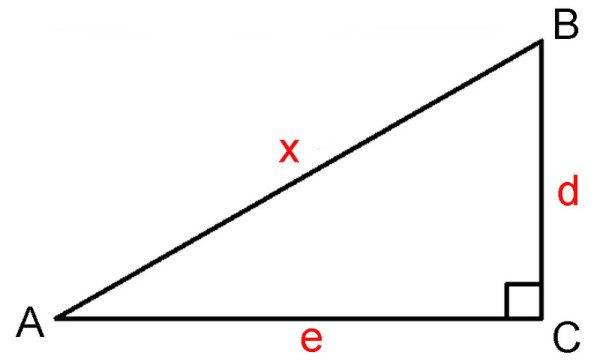
- In order to calculate the length of the stringer, take the letter d for its height (segment BC), and e for the length of the march (segment AC), then the required length (segment AB) will be x. Here you need to apply the formula d2+ e2= x2=2,662+3,52= 7.0756 + 12.25 = 19.3256, but from here you need to extract the square root, then √19.3256 = 4.396 m, that is, for the kosour (bowstrings) you will need a workpiece 4.5 m long, 0.25-0.3 m wide and 50-60 mm thick.
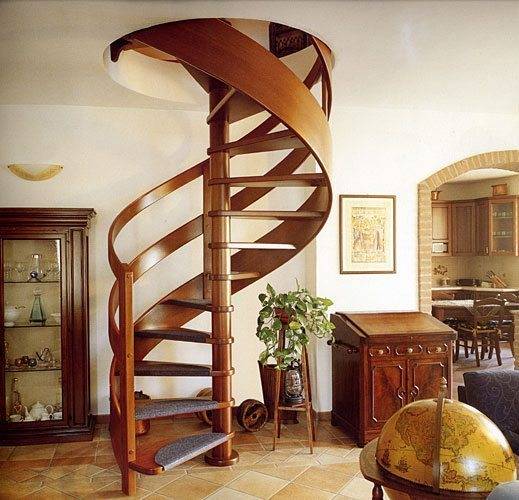
Advice. If the 25 cm width of the tread board seems a little to you, then you can use the run-in steps. To do this, the tread should hang over the tread by 3-4 cm. The largest visor is 5 cm, otherwise the sock will cling when lifted.
Steps and railings
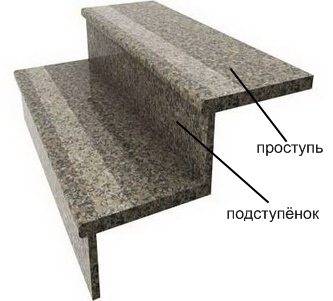
- For treads and risers, as a rule, oak or pine needles (mahogany is possible) and the thickness of the board here can vary from 25 to 50 mm, but if 25 mm is enough for the riser, then thicker material is better for tread to increase the service life ... For a thick board, the price is certainly higher, but due to the duration of use, the cost is fully compensated. The width of the march or the length of the tread can be from 0.7 to 1.5 m.
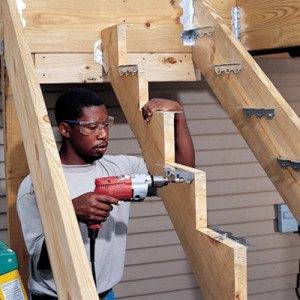
Advice.On the bowstrings, the treads need to be thicker, and the stringers can be laid 3-4 pieces per march, so there will be less load per step and it can be made thinner (see photo above).
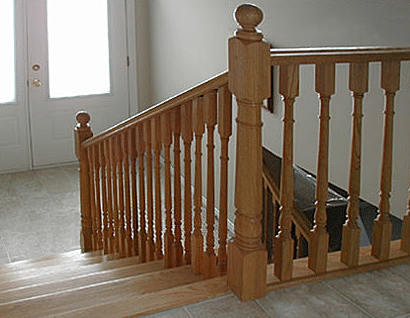
- According to GOST 25772-83, the height of the staircase rails in the premises should not be less than 900 mm. So, in this distance we need to lay balusters together with a handrail, although they can be made higher. We need to install one baluster for each step, which means that if the railings are on both sides, 28 balusters and 4 columns or pedestals will be needed for a march of 14 steps - 2 at the top and 2 at the bottom.
- The curbstones are the main element for stiffening the railings, so their soles are made as large as possible.

- To mount balusters to treads and handrails, use thick self-tapping screws (6-8 mm in diameter), closing them with plugs, so you can include 28 * 2 = 56 screws and the same number of plugs in the hardware count. Also, special brackets are used for fastening, but the first method is cheaper. For pedestals, fastenings are considered separately, and their number will depend on its cross section, in addition, all joints should be smeared with glue on wood.
- Handrails for handrails are usually made of 50 × 50 mm timber (oak, pine needles, mahogany), and their length is calculated using the same formula as for kosour, that is, d2+ e2= x2, but the workpiece is taken, of course, 10-15 cm longer. The top of the handrails is sometimes trimmed with a metal strip or plastic, which is also included in the number of component parts when assembling a wooden staircase.
Conclusion
We examined wooden stairs and accessories that are mandatory for their installation and that you can make yourself and purchase in the store (order at the carpentry workshop). But let's not forget that there is such a thing as finishing, where wood carving is widely used - in this case, the number of parts can increase significantly.






